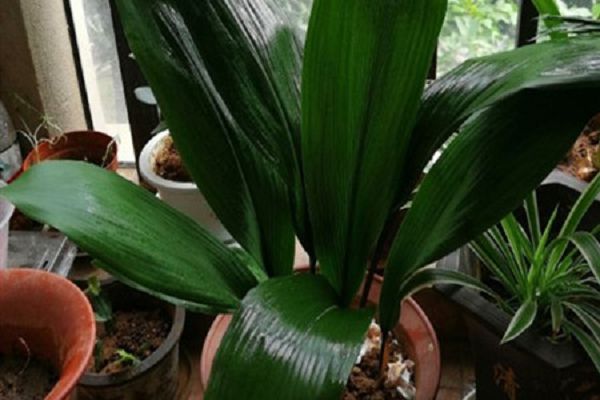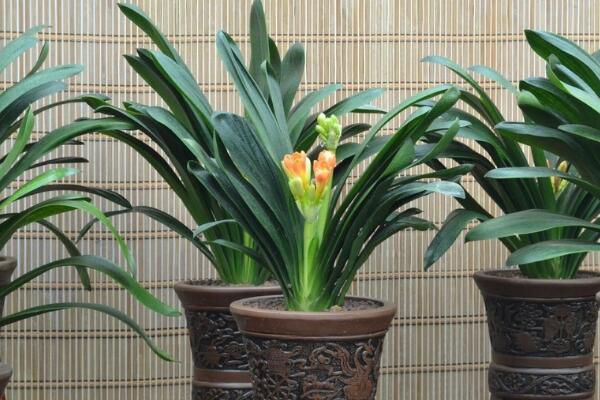Maintenance skills of White Orchid
1. Understand the living environment that Prynne needs. Magnolia flowers like warm, moist, should be well ventilated, have sufficient sunshine, afraid of cold, avoid dampness, do not like shade, and do not bear sunburn. It seems that its requirements are quite high, and we should take extra care of them.
2. Watering white orchids is a very skillful thing. Watering is the key to raising white orchids, but because of the fleshy root system, they are afraid of stagnant water and are not resistant to dryness. Irrigate once out of the house in spring, then once every other day; once in the morning and evening in summer, spray foliar water if it is too dry; once every 2-3 days in autumn; buckle water in winter, as long as the basin soil is slightly moist; pour the stagnant water in time after rain. It is better to apply thin fertilizer frequently, cake fertilizer is better, no fertilizer is applied in winter, fertilizer and water is irrigated every 3-4 days from new buds to June, once every 5-6 days from July to September, and should be stopped after several times of fertilizer application.
3. The soil should not be neglected. White orchids like good drainage, rich in humus, loose, slightly acidic sandy soil. Usually change the basin once in 2-3 years, it is better to change the basin after Grain Rain, and add loose soil. Not cold-resistant, except for South China, all other areas should enter the room for maintenance in winter, the lowest room temperature should be kept above 5 ℃, and the time to leave the room should be from Qingming Festival to Grain Rain.
Give it a haircut in time. Send out new shoots three times a year. In general, the first time is in late February, the second time is in mid-June, and the third time is in early August. Due to the growth and flowering after each germination, the flowering period is as long as 150 days. During the growing period, fertilization was applied once every ten days, phosphate fertilizer was applied 2-3 times at flowering stage, diseased branches, withered branches and overgrown branches were cut off at the same time, and some old leaves were removed to inhibit tree potential growth and promote more flowering.
5. Pest control should not be taken lightly. The common diseases of white orchid are yellowing, anthrax, root rot; insect pests include shell insects, red spiders, aphids, diamondback moths and so on.
Anthracnose: mainly occurs on the leaves, initially showing chlorosis and small yellow spots, then gradually expanding into round or oval, several disease spots merge into irregular spots, the central light brown, the edge dark brown, the disease spot occurs in the leaf edge is semicircle, so that the leaves are twisted, when the disease is serious, the whole leaf is scorched, blackened and shedding, the disease is a fungal disease, the pathogen overwinters in the host tissue, and the pot plants are overwatered. Excessive humidity is easy to occur, which usually begins in early June, and the peak period is from July to August. The prevention and treatment methods are as follows: improve the watering method and let water be injected from the edge of the basin, not too much. Combined with pruning, cutting off diseased leaves and tips, removing fallen leaves and destroying them, in order to reduce the source of disease; in spring and plum rain seasons, spray the same amount of 100 to 200 times Bordeaux solution, 65% Dysen zinc solution 500 to 800 times, or 70% methyl topiramate 1000 times, three to four times in a row, in order to inhibit the occurrence of the disease.
Root rot disease: it is a fungal disease. Excessive watering or waterlogging of white orchids can easily cause root system blackening and decay, poor growth of light ones, yellowing and shedding of leaves, and death of the whole plant. Prevention and control methods: efforts to improve soil drainage conditions is an important measure to prevent the disease, watering should be dry and wet, watering thoroughly, and pay attention to loose soil; in continuous rainy days, it is necessary to prevent rain and dump stagnant water in the basin in time. The bottom of the basin should be padded with more drainage materials such as broken tiles, and when placed outdoors, it is best to use bricks to cushion the flowerpot to facilitate drainage; when the plant is infected during the growing period, you can irrigate the root soil with chemicals such as 65% generations of zinc, 50% generations of ammonium, or 50% times of carbendazim.
Chlorosis: also known as chlorosis, is a physiological disease, basin soil is somewhat alkaline, and water with more saline-alkali ingredients is used at the same time, which will cause the leaves of white orchids in slightly acidic soil to gradually change from green to yellowish white, and in serious cases, it will cause local necrosis of the leaves to be brown. immediately spray 0.5% ferrous sulfate solution to the leaves, spray once a week, spray three to four times continuously, and apply alum fertilizer at the same time.
Diseases and insect pests: the main diseases and insect pests of Magnolia are yellowing, anthracnose, red spiders, shell insects, etc. Bailan likes acidic soil, such as alkaline soil, or irrigation water is also alkaline, which is easy to cause yellowing of leaves and black and rotten roots of Magnolia. 0.2% ferrous sulfate solution can be used to spray the leaf surface every 5-7 days, and 0.5% ferrous sulfate solution can be used to prevent and cure it.
If you want your magnolia to grow more and more beautiful, you should pay attention to its maintenance methods.
Related
- Is the orchid suitable for indoor use? Is it good for the body?
- How to prevent the empty root of orchids?
- What to do after the crab claw orchid is withered?
- Why are the leaves of orchids always yellow? Fertilizing and watering.
- Can the root of the gentleman orchid be saved if it is rotten?
- Diagnosis and treatment of cotton-blowing beetle insects in Cymbidium
- There is a way for a gentleman's orchid to rot.
- What is the most suitable temperature and humidity for the orchid?
- How to raise a gentleman's orchid? Cultivation techniques of Cymbidium
- How to prepare the nutritive soil for the cultivation of Cymbidium



